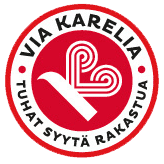Winter War 30 November 1939 – 13 March 1940
Finland was prepared fore the Soviet attack. The defense plan was made on the belief that the Soviet army would target its main offense on the Karelian isthmus. There, the plan was to halt the enemy on the isthmus at the line where the several lakes formed a natural obstacle obstructing the forces and hindering their action.
Another offense was expected on the north-western and northern side of Lake Ladoga, where the road network was relatively good. That would allow the Soviet Army to attack in great numbers. Two divisions of the Finnish IV Army Corps were located there. North of Ilomantsi, the entire long eastern frontier was manned only with detached battalions and border companies, when the war broke.
In reality, the Soviets had planned a much larger offense. The Soviet Union had grouped a division or two on every road up north leading from east to west. The invasion started on every road leading to Finland at the same time. As a result, at the very beginning of the war, apart from the Karelian isthmus and north of Lake Ladoga, the Finnish troops had to withdraw as far as 80-100km from their original position. Therefore, the battles of the Winter War took place on the current Finnish ground north of Ilomantsi.
Quite soon, the so called miracle of Winter War started to emerge. It is evident in all the war-time events that are commemorated by the several war memorials on Via Karelia.
In the light of the events in Ilomantsi and further north, it appears that the Soviet army experienced a massive failure. On these fronts, it was very much the truth. On the northern side of Lake Ladoga, the Soviet army did not succeed either. In February 1940, the Soviet Union focused its decisive offense on the Karelian isthmus. The situation grew critical, and Finland needed to accept the Soviet peace terms. Finland had to cede the Karelian isthmus and land north of Lake Ladoga, and territories in Salla and Kuusamo, and lease the Hanko peninsula to the Soviet Union.




